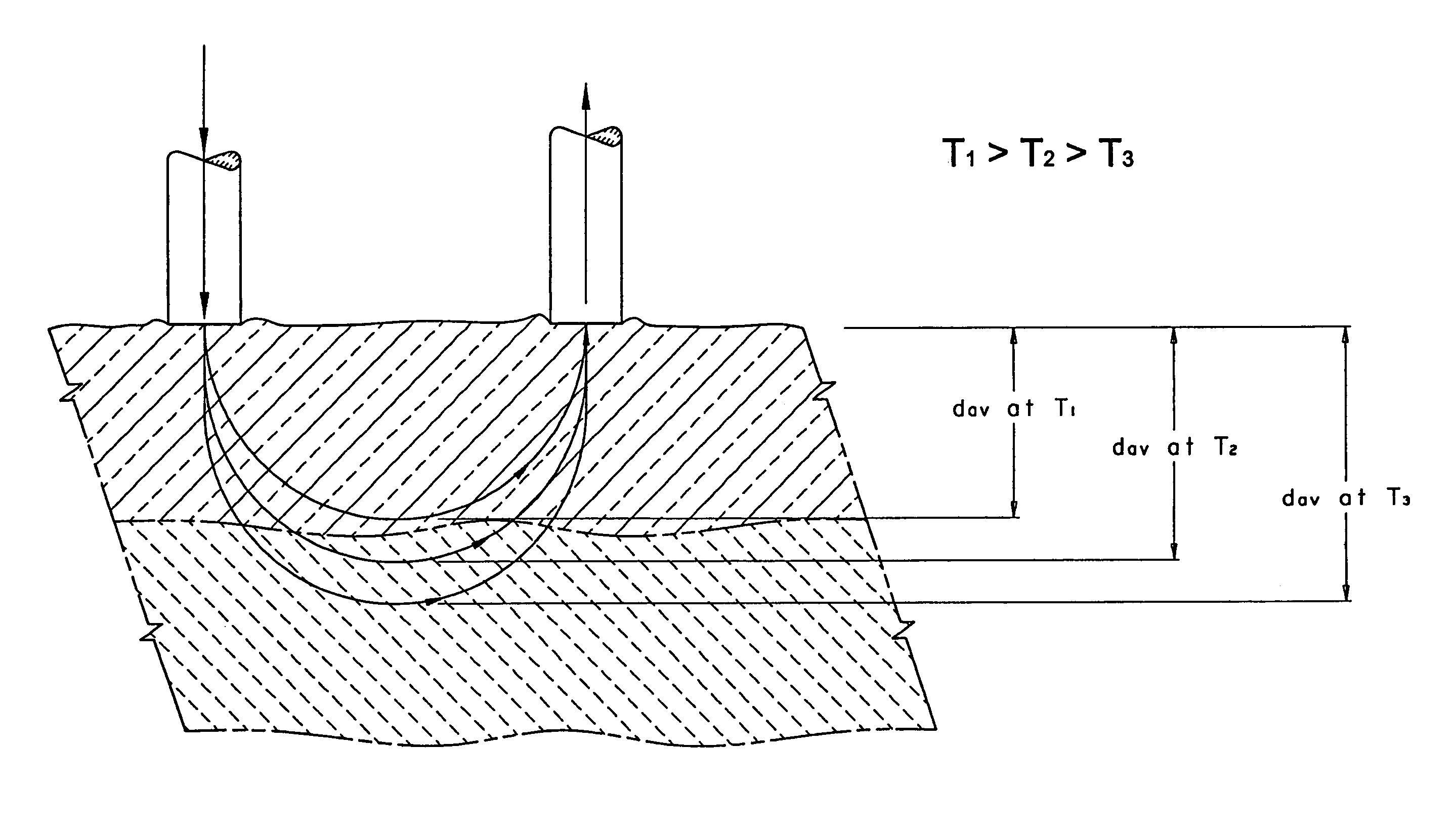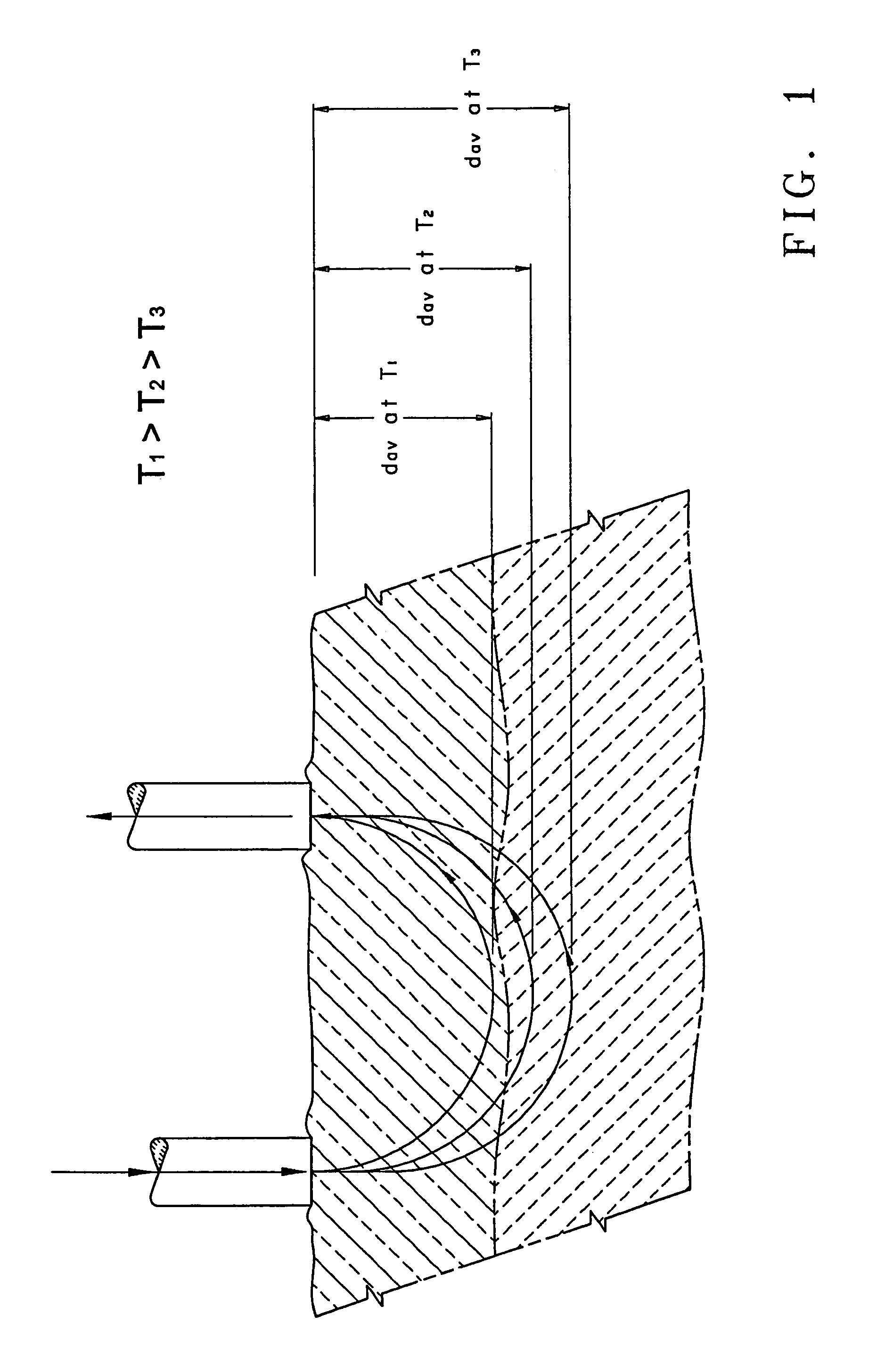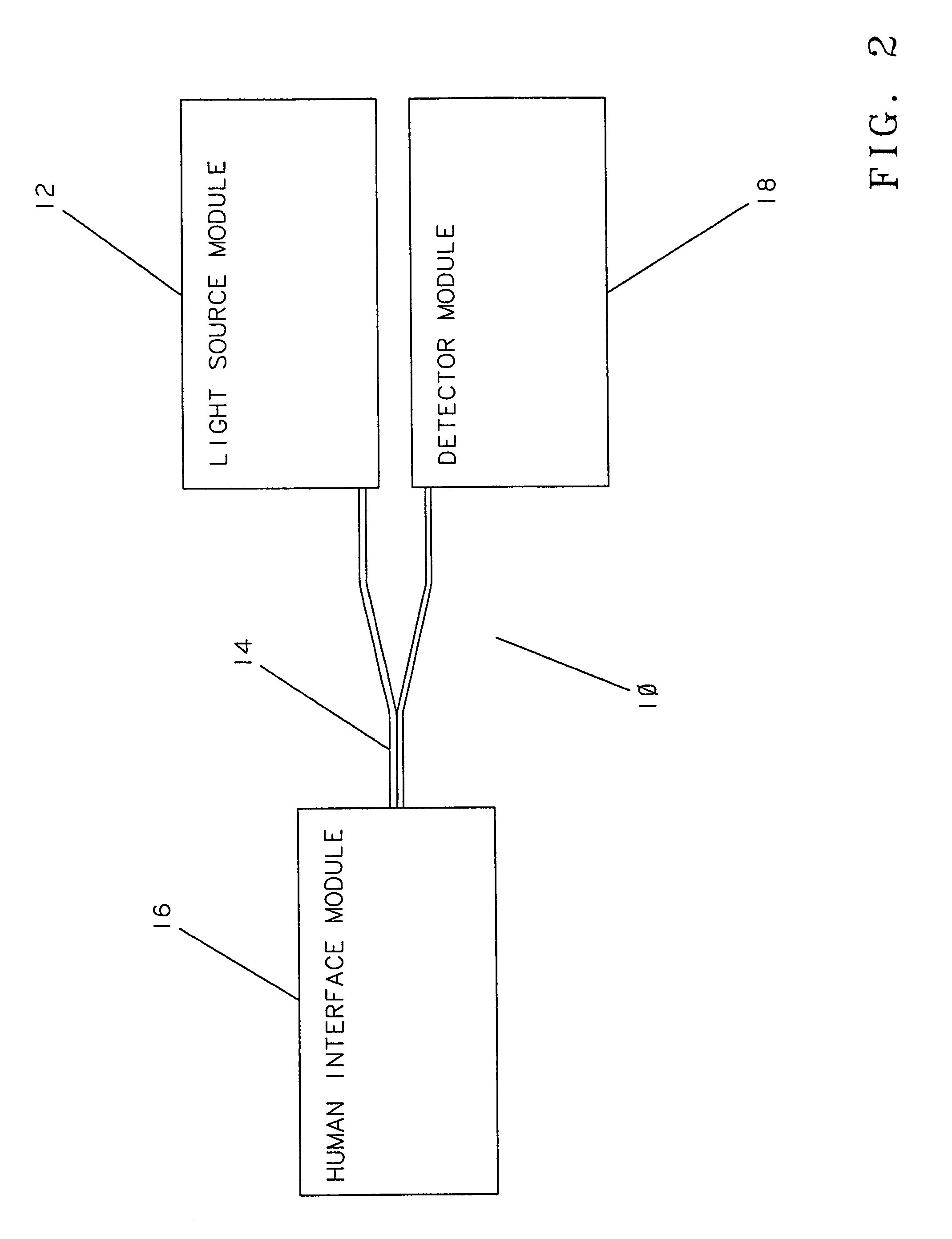Method for modulating light penetration depth in tissue and diagnostic applications using same
a technology of light penetration depth and tissue, applied in the field of non-invasive determination of in vivo concentrations of analytes or evaluation of a disease state, can solve the problems of inability to achieve acceptable precision and accuracy, inability to provide non-invasive glucose measurement accuracy, and inability to achieve non-invasive metabolite testing, such as glucose monitoring, to achieve the effect of reducing the effect of repositioning error
- Summary
- Abstract
- Description
- Claims
- Application Information
AI Technical Summary
Benefits of technology
Problems solved by technology
Method used
Image
Examples
example 1
[0135]FIG. 2 through FIG. 5 illustrate an apparatus suitable for the measurement of optical properties, and hence the concentration of different analytes at various depths in tissue. Co-pending U.S. application Ser. No. 09 / 098,049, filed Nov. 23, 1998, assigned to the assignee of this application, describes in detail many of the components used in the apparatus of this application. The apparatus is capable of introducing light into the skin of human subjects and measuring the light re-emitted therefrom.
[0136]FIG. 2 is a block diagram illustrating an embodiment of an apparatus 10 of this invention. The apparatus 10 comprises a light source module 12, a bifurcated optical fiber bundle 14, a human interface module 16, and a detector module 18. The light source module 12 includes a source of modulated light (not shown), such as a Gilway L1041 lamp modulated with a Stanford Research Optical Chopper. A prism, a dichroic beam splitter, or the like (not shown) may be used to direct a portio...
example 2
[0146]The apparatus described in Example 1 was used to study the effect of temperature changes on the optical properties of human skin. FIG. 6A shows the change in reflectance as a function of temperature for a Caucasian subject for light having wavelengths of 590 nm, 650 nm, and 800 nm. The temperature was increased from 24° C. to 34° C., then lowered to 22° C. and finally raised to 38° C. The reflectance values are normalized to the value at 24° C. Temperature was maintained at each value for four (4) minutes during which the reflectance was measured; the transition between two temperatures consumed a period of about one minute. The μs′ and μa values were determined by measuring spatially resolved diffuse reflectance in a temperature-controlled area of the human forearm.
[0147]The normalized reflectance curves were analyzed by means of a Monte Carlo simulation and calibration grid generated with a set of absorbing and / or scattering phantoms to generate a calibration grid. The absor...
example 3
[0149]The apparatus described in Example 1 was used to test the change in optical properties of the human forearm for several subjects of different skin color. Nine subjects were tested. Testing was performed at least two hours after the breakfast meal and was completed between 10 A.M. and 12 noon each day. Testing on nine individuals was performed over the period of several days. Two of the subjects were Type II diabetics. Temperature was varied between 38° C. and 22° C. Values of μs′ and μa were calculated by means of the method described in Example 2 of this application.
[0150]The value of μeff was calculated using Equation (2). Light penetration depth δ for a given temperature was calculated as δ=1 / μeff. Change in light penetration depth (Δδ) as a result of changing temperature between 38° C. and 22° C. was then calculated. The following three tables summarize the changes in light penetration depth in tissue resulting from modulating temperature between 38° C. and 22° C. Data for...
PUM
 Login to View More
Login to View More Abstract
Description
Claims
Application Information
 Login to View More
Login to View More - R&D
- Intellectual Property
- Life Sciences
- Materials
- Tech Scout
- Unparalleled Data Quality
- Higher Quality Content
- 60% Fewer Hallucinations
Browse by: Latest US Patents, China's latest patents, Technical Efficacy Thesaurus, Application Domain, Technology Topic, Popular Technical Reports.
© 2025 PatSnap. All rights reserved.Legal|Privacy policy|Modern Slavery Act Transparency Statement|Sitemap|About US| Contact US: help@patsnap.com



